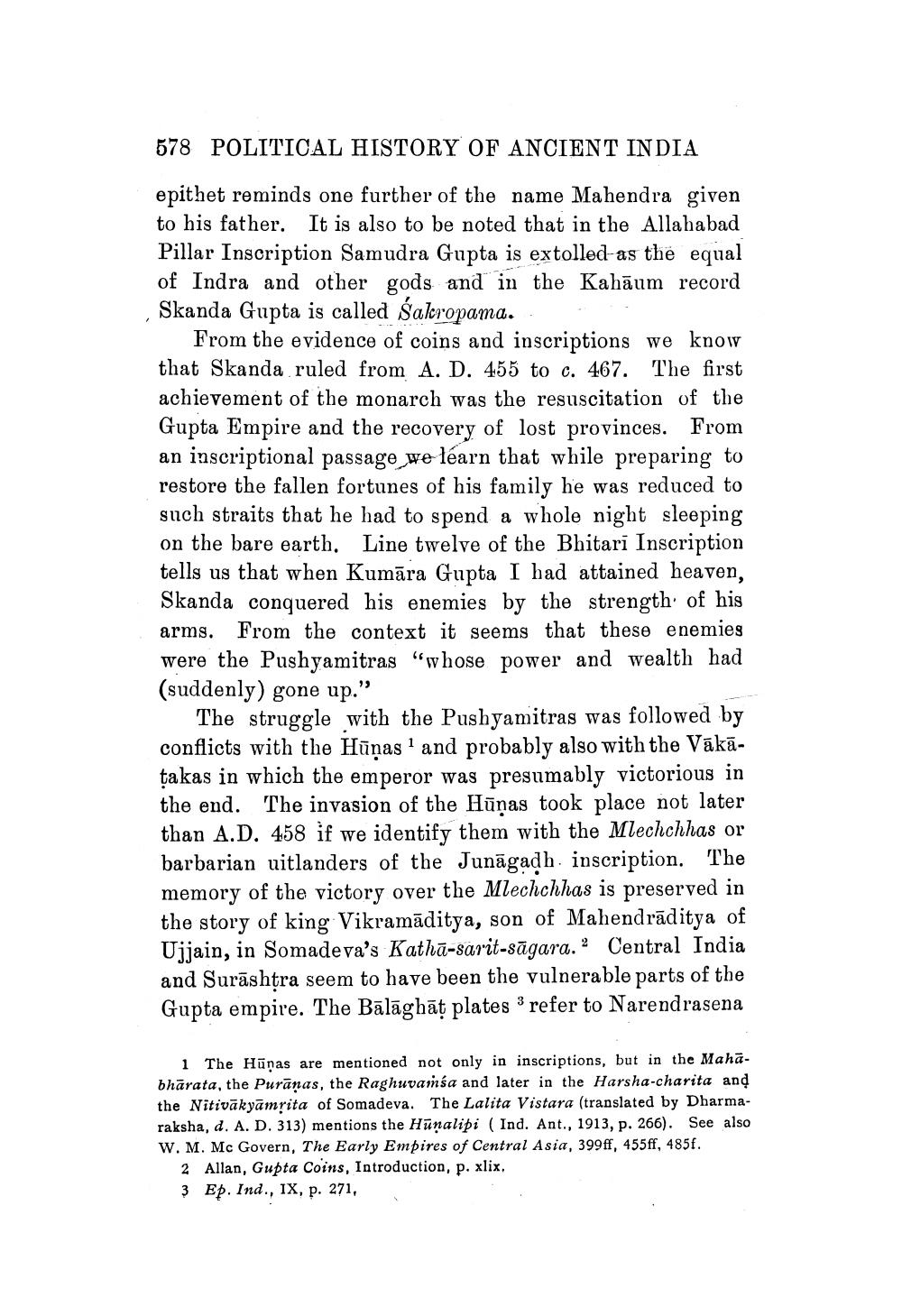________________
578 POLITICAL HISTORY OF ANCIENT INDIA
epithet reminds one further of the name Mahendra given to his father. It is also to be noted that in the Allahabad Pillar Inscription Samudra Gupta is extolled as the equal of Indra and other gods and in the Kahaum record Skanda Gupta is called Sakropama.
From the evidence of coins and inscriptions we know that Skanda ruled from A. D. 455 to c. 467. The first achievement of the monarch was the resuscitation of the Gupta Empire and the recovery of lost provinces. From an inscriptional passage we learn that while preparing to restore the fallen fortunes of his family he was reduced to such straits that he had to spend a whole night sleeping on the bare earth. Line twelve of the Bhitari Inscription tells us that when Kumāra Gupta I had attained heaven, Skanda conquered his enemies by the strength of his arms. From the context it seems that these enemies were the Pushyamitras "whose power and wealth had (suddenly) gone up."
The struggle with the Pushyamitras was followed by conflicts with the Hūņas1 and probably also with the Vākātakas in which the emperor was presumably victorious in the end. The invasion of the Hunas took place not later than A.D. 458 if we identify them with the Mlechchhas or barbarian uitlanders of the Junagadh inscription. The memory of the victory over the Mlechchhas is preserved in the story of king Vikramaditya, son of Mahendraditya of Ujjain, in Somadeva's Katha-sarit-sagara. Central India and Surashtra seem to have been the vulnerable parts of the Gupta empire. The Balaghat plates 3 refer to Narendrasena
1 The Hunas are mentioned not only in inscriptions, but in the Mahabharata, the Puranas, the Raghuvamsa and later in the Harsha-charita and the Nitivakyamṛita of Somadeva. The Lalita Vistara (translated by Dharmaraksha, d. A. D. 313) mentions the Hunalipi ( Ind. Ant., 1913, p. 266). See also W. M. Mc Govern, The Early Empires of Central Asia, 399ff, 455ff, 485f.
2 Allan, Gupta Coins, Introduction, p. xlix. 3 Ep. Ind., IX, p. 271,




